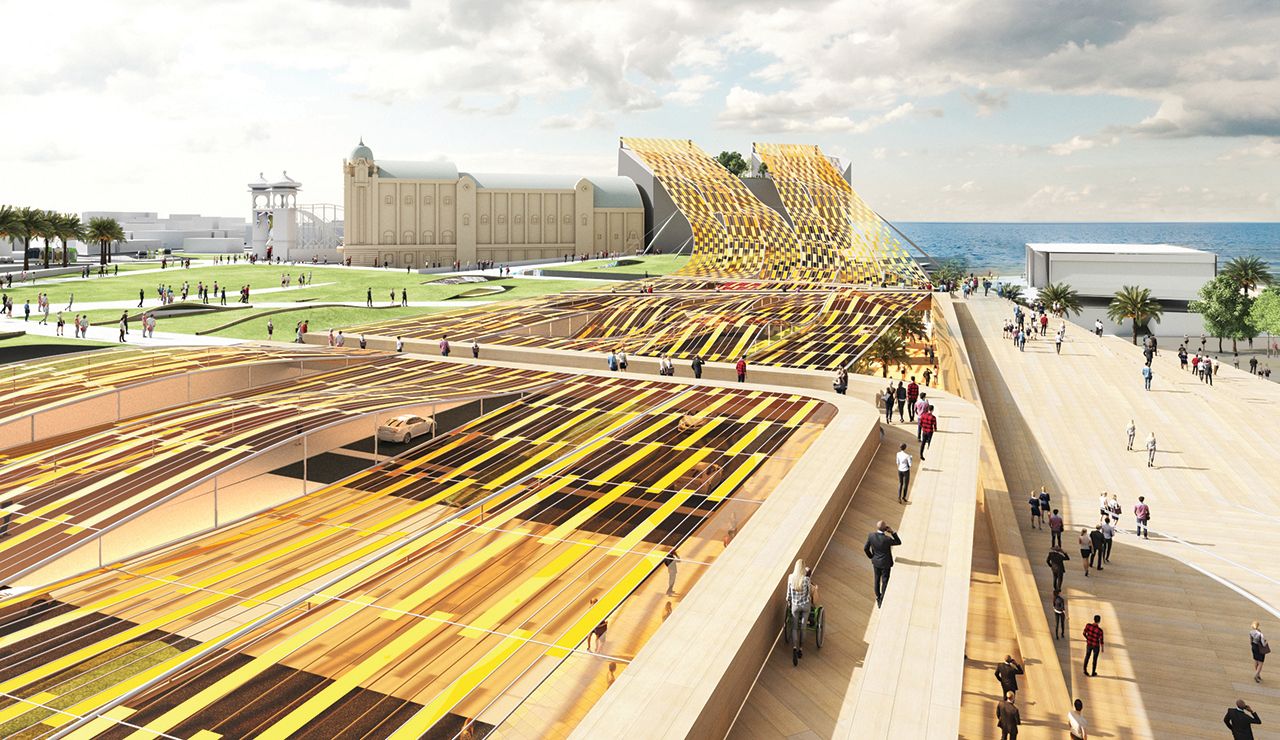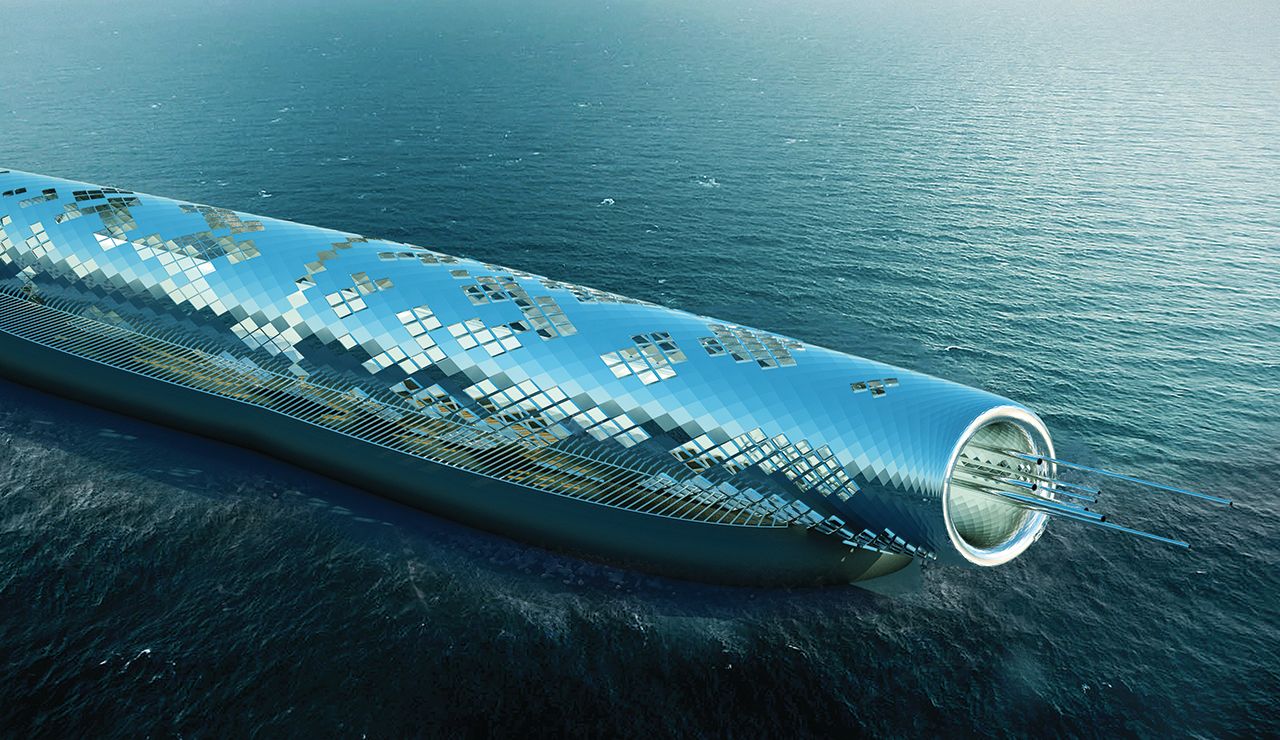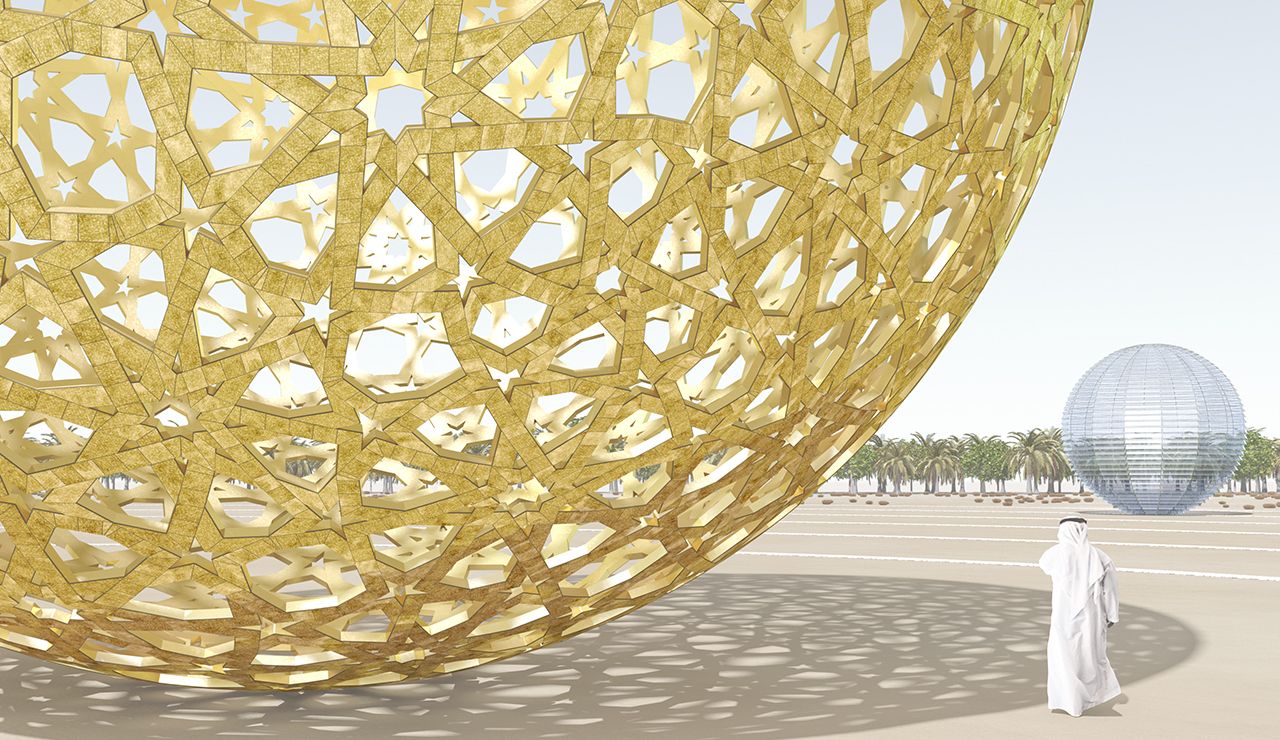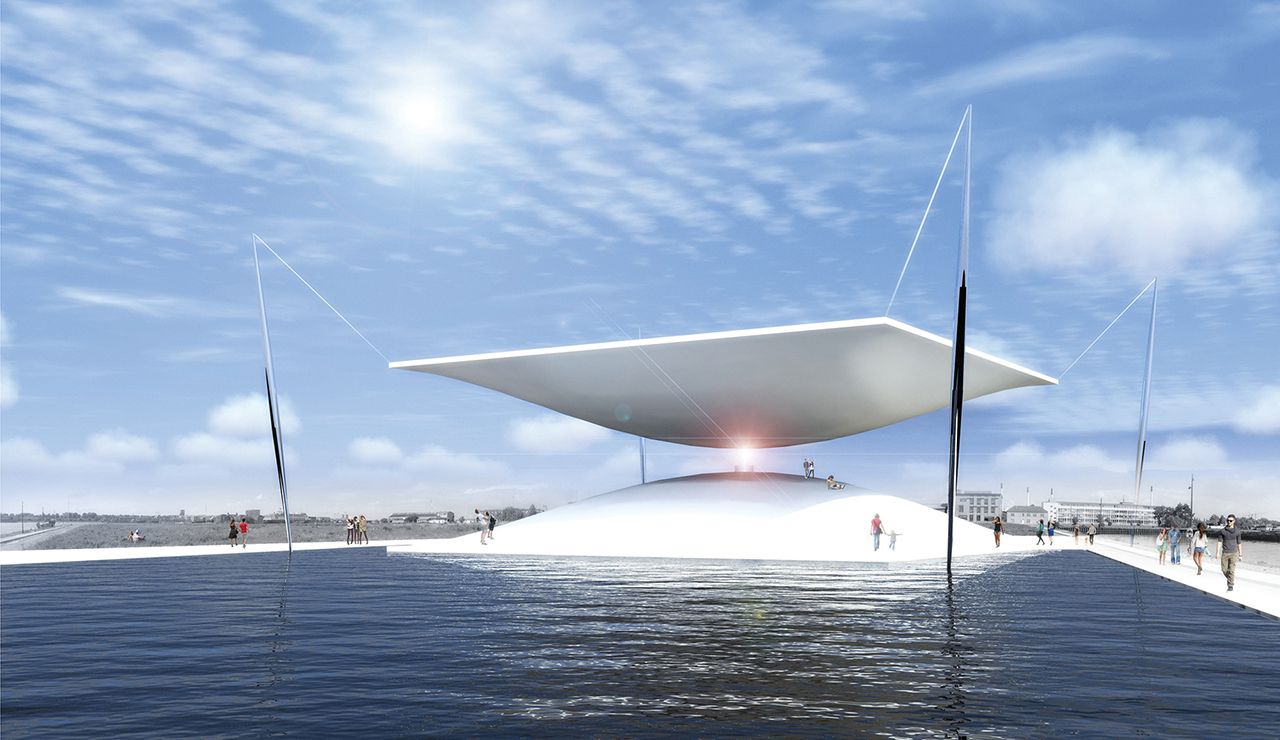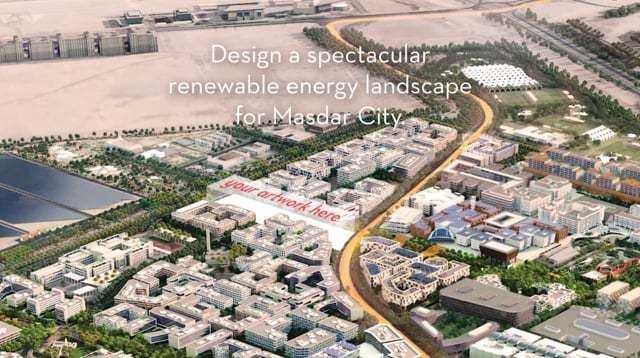The Pipe: Land Art Generator Initiative is an international design competition that aims to accelerate the transition to post-carbon economies by providing models of renewable energy infrastructure. One of this year finalists is an impressive solar-powered pipe for seawater desalination conceptualized by Khalili Engineers, the project “reminds us about our dire dependence on water and on our need to appreciate and value this vital gift.” “What you are witnessing is a change in the future of pure water”, stated the project’s engineers in a press release.
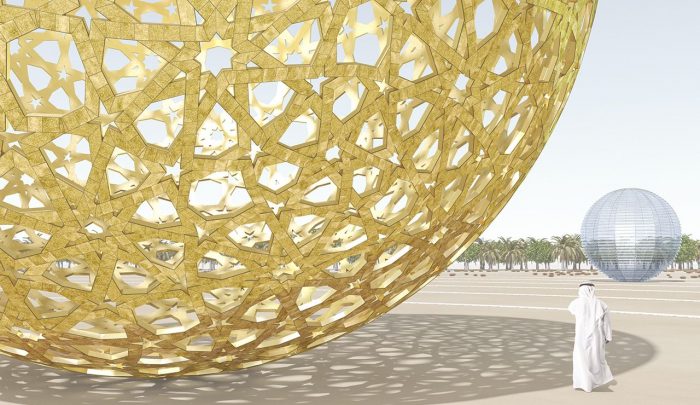
Solar (ECO) System, by Antonio Maccà is a submission to the 2010 Land Art Generator Initiative design competition for the UAE, and generates 1,000 MWh of clean energy.
‘The Pipe’ is a floating electromagnetic desalination device to provide clean drinking water off the coast of Santa Monica, California. It draws energy from the sun. According to Inhabitat, the tube with a surface resembling a disco ball, “could generate 10,000 MWh of electricity annually, powering an electromagnetic filtration system capable of pumping out 1.5 billion gallons (4.5 billion liters) of clean drinking water for the city over the same period.”
The desalination process used in “The Pipe” resorts to electromagnetic energy. “In Electromagnetic Filtration (EF), we use an isolated electromagnetic field on pipes circulating the seawater, separating the salts and impurities. The process is very rapid and extremely efficient.”, the engineers explained.
The filtration results in two by-products: one is pure drinkable water that is directed into the city’s primary water piping grid; the other is clean water with 12% salinity. The latter supplies the thermal baths, but on the larger scale is redirected back to the ocean through a Smart Release system, which provides an eco-friendly system for returning the saline water to the sea.
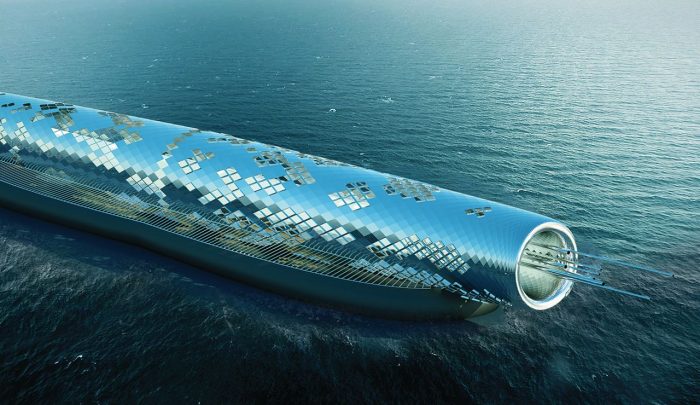
The Pipe, by Khalili Engineers, is a submission to the 2016 Land Art Generator Initiative design competition for Santa Monica, and generates 4.5 billion liters of drinking water from solar power.
Unlike the traditional methods, the EF process does not introduce any chemicals to the water and water temperature is unchanged. Moreover, an EF plant consumes only 2,500 kWh of electricity per 300,000 Gallons of water, against the 4,500 kWh of a traditional desalination plant.
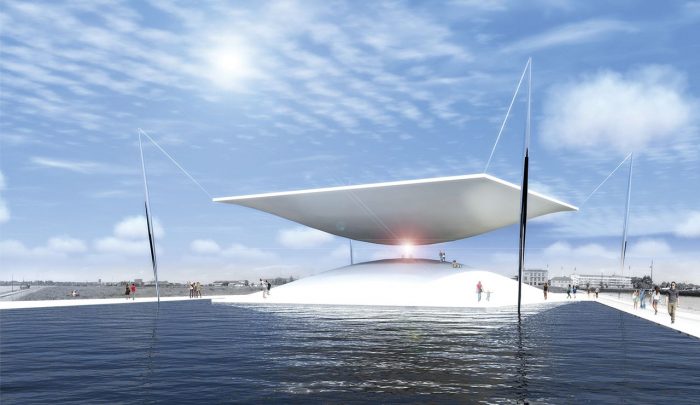
The Solar Hourglass, by Santiago Muros Cortés, is the winner of LAGI 2014 Copenhagen. Energy Technologies: concentrated solar power (thermal beam-down tower with heliostats). Annual Capacity: 7,500 MWh
The structure of the pipe is constructed of recycled stainless-steel. Photovoltaic panels line the roof and the sides, providing solar power to the entire building. Wooden decks, located in the bottom tubes, provide lounge areas and a lookout in various directions. The water treatment facilities are located at the lower section of the building, with limited access.
